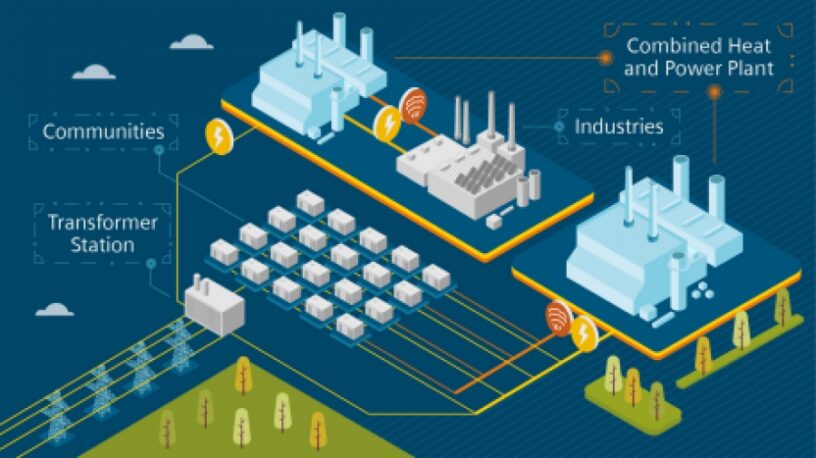Bioliquid Heat and Power Generation Market share is expected to reach USD 3.4 billion by 2027 to USD 4.66 billion in 2033, with a CAGR of 7.6% during the forecast period 2024-2033.
Introduction
The bioliquid heat and power generation market represents a pivotal sector in the global transition towards sustainable energy solutions. Bioliquids, derived from renewable biomass sources, offer an environmentally friendly alternative to traditional fossil fuels for heat and electricity generation. In this comprehensive analysis, we delve into the key components, market dynamics, applications, challenges, and future prospects of the bioliquid heat and power generation market.
Understanding Bioliquids
Bioliquids are liquid biofuels derived from various biomass feedstocks, including vegetable oils, animal fats, and waste materials. These feedstocks undergo processing to extract oils or convert them into biofuels suitable for combustion in heat and power generation systems. The most common types of bioliquids include biodiesel, bioethanol, and biogasoline, each with unique properties and applications in the energy sector.
Types of Bioliquids
- Biodiesel: Biodiesel is a renewable fuel produced from vegetable oils, animal fats, or recycled cooking grease through a process called transesterification. It can be used as a standalone fuel or blended with petroleum diesel for use in diesel engines, providing cleaner combustion and reduced emissions.
- Bioethanol: Bioethanol is a renewable alcohol fuel primarily derived from crops such as corn, sugarcane, and wheat. It is commonly blended with gasoline to produce ethanol-blended fuels, offering improved octane ratings and reduced greenhouse gas emissions.
- Biogasoline: Biogasoline is a renewable fuel produced from biomass feedstocks through various conversion processes, such as pyrolysis and hydroprocessing. It shares similar properties with petroleum gasoline and can be used in existing gasoline engines without modification.
Market Dynamics
The bioliquid heat and power generation market is influenced by several factors, including:
- Environmental Regulations: Stringent environmental regulations and carbon reduction targets drive the demand for renewable fuels such as bioliquids. Policies such as the Renewable Energy Directive (RED) in the European Union and the Renewable Fuel Standard (RFS) in the United States incentivize the use of bioliquids for heat and power generation.
- Technological Advancements: Ongoing advancements in biomass conversion technologies, such as gasification, anaerobic digestion, and pyrolysis, are improving the efficiency and cost-effectiveness of bioliquid production. These technological innovations enable the utilization of a wide range of biomass feedstocks and enhance the sustainability of bioliquid-based energy systems.
- Market Expansion: The growing demand for clean and renewable energy sources, coupled with increasing concerns about climate change and energy security, is driving the expansion of the bioliquid heat and power generation market. Governments, utilities, and industries are investing in bioliquid-based energy infrastructure to diversify their energy portfolios and reduce reliance on fossil fuels.
Applications of Bioliquids in Heat and Power Generation
Bioliquids play a crucial role in various applications within the heat and power generation sector, including:
- Combined Heat and Power (CHP) Systems: CHP systems, also known as cogeneration systems, simultaneously produce heat and electricity from a single fuel source, such as bioliquids. These systems are widely used in industrial, commercial, and residential settings to improve energy efficiency and reduce operating costs.
- District Heating and Cooling: District heating and cooling networks utilize bioliquids to provide centralized heating and cooling services to multiple buildings and facilities. Bioliquid-based district heating systems offer a renewable and efficient alternative to conventional fossil fuel-based heating systems, reducing greenhouse gas emissions and promoting energy independence.
- Power Generation: Bioliquids can be used in conventional power plants or dedicated biomass power plants to generate electricity. Biomass power plants utilize bioliquids as fuel to produce steam, which drives turbines to generate electricity. These power plants contribute to grid stability and renewable energy integration, particularly in regions with abundant biomass resources.
Challenges and Future Outlook
Despite the numerous benefits of bioliquid heat and power generation, the market faces several challenges, including:
- Feedstock Availability and Sustainability: Ensuring a consistent and sustainable supply of biomass feedstocks is critical for the long-term viability of the bioliquid market. Sustainable sourcing practices, land use policies, and crop diversification efforts are needed to prevent competition with food production and mitigate environmental impacts.
- Technological Innovation: Continued research and development efforts are essential to drive technological innovation and cost reduction in bioliquid production and conversion processes. Advancements in biomass pretreatment, conversion efficiency, and waste valorization will enhance the competitiveness of bioliquids compared to conventional fossil fuels.
- Policy Support and Market Incentives: Governments and regulatory authorities play a crucial role in providing policy support and market incentives to promote the adoption of bioliquid heat and power generation technologies. Policy frameworks that prioritize renewable energy investments, carbon pricing mechanisms, and tax incentives can accelerate market growth and deployment of bioliquid-based energy systems.
Receive the FREE Sample Report of Bioliquid Heat and Power Generation Market Research Insights @ https://stringentdatalytics.com/sample-request/bioliquid-heat-and-power-generation-market/13372/
Market Segmentations:
Global Bioliquid Heat and Power Generation Market: By Company
• Olleco
• BTG
• Kraton
• REG
• Neste
• REG Power Management
• MBP Group
• Biox
• Bunge
• Ensyn Fuels
• Betarenewables
• Munzer Bioindustrie
• Argent Energy
• Encontech
Global Bioliquid Heat and Power Generation Market: By Type
• Bioethanol
• Biodiesel
Global Bioliquid Heat and Power Generation Market: By Application
• Heat Production
• Electricity Generation
Regional Analysis of Global Bioliquid Heat and Power Generation Market
All the regional segmentation has been studied based on recent and future trends, and the market is forecasted throughout the prediction period. The countries covered in the regional analysis of the Global Bioliquid Heat and Power Generation market report are U.S., Canada, and Mexico in North America, Germany, France, U.K., Russia, Italy, Spain, Turkey, Netherlands, Switzerland, Belgium, and Rest of Europe in Europe, Singapore, Malaysia, Australia, Thailand, Indonesia, Philippines, China, Japan, India, South Korea, Rest of Asia-Pacific (APAC) in the Asia-Pacific (APAC), Saudi Arabia, U.A.E, South Africa, Egypt, Israel, Rest of Middle East and Africa (MEA) as a part of Middle East and Africa (MEA), and Argentina, Brazil, and Rest of South America as part of South America.
Click to Purchase Bioliquid Heat and Power Generations Market Research Report @ https://stringentdatalytics.com/purchase/bioliquid-heat-and-power-generation-market/13372/?license=single
Bioliquid Heat and Power Generations Market Report Highlights
- Rising Demand for Renewable Energy: The bioliquid heat and power generation market is experiencing significant growth due to increasing demand for renewable energy sources. Bioliquids offer a sustainable alternative to fossil fuels, driving adoption across various industries and applications.
- Government Support and Policies: Supportive government policies and incentives, such as renewable energy targets and carbon reduction mandates, are fostering market growth. Initiatives like the Renewable Energy Directive (RED) in the European Union and the Renewable Fuel Standard (RFS) in the United States are driving investment in bioliquid-based energy infrastructure.
- Technological Advancements: Ongoing advancements in biomass conversion technologies are enhancing the efficiency and cost-effectiveness of bioliquid production. Innovations in gasification, anaerobic digestion, and pyrolysis processes are expanding the range of feedstocks that can be used for bioliquid production and improving overall sustainability.
- Diverse Applications: Bioliquids find applications across a wide range of heat and power generation systems, including combined heat and power (CHP) plants, district heating networks, and biomass power plants. Their versatility and compatibility with existing infrastructure make them a preferred choice for renewable energy integration.
- Environmental Benefits: Bioliquids offer significant environmental benefits, including reduced greenhouse gas emissions, improved air quality, and enhanced energy security. By displacing fossil fuels in heat and power generation, bioliquids contribute to mitigating climate change and promoting sustainable development.
- Challenges and Opportunities: Despite the promising growth prospects, the bioliquid heat and power generation market faces challenges such as feedstock availability, technological barriers, and policy uncertainties. Addressing these challenges requires collaborative efforts from stakeholders across the value chain to drive innovation and promote market competitiveness.
- Market Expansion: This market is witnessing expansion beyond traditional markets, with increasing adoption in emerging economies and niche applications. Growing awareness of environmental issues and the need for energy diversification are driving market expansion and investment in bioliquid-based energy solutions.
- Future Outlook: The future outlook for the bioliquid heat and power generation market is optimistic, with continued growth expected in the coming years. Advancements in technology, supportive policies, and shifting consumer preferences towards clean energy sources are expected to drive market expansion and accelerate the transition towards a low-carbon economy.
Conclusion
In conclusion, the bioliquid heat and power generation market offers a sustainable and renewable solution to meet the growing demand for clean energy. With advancements in technology, supportive policies, and increasing awareness of environmental issues, bioliquids are poised to play a significant role in the global transition towards a low-carbon economy. By leveraging biomass resources and investing in innovative energy solutions, stakeholders can contribute to a more sustainable and resilient energy future.
About Stringent Datalytics
Stringent Datalytics offers both custom and syndicated market research reports. Custom market research reports are tailored to a specific client’s needs and requirements. These reports provide unique insights into a particular industry or market segment and can help businesses make informed decisions about their strategies and operations.
Syndicated market research reports, on the other hand, are pre-existing reports that are available for purchase by multiple clients. These reports are often produced on a regular basis, such as annually or quarterly, and cover a broad range of industries and market segments. Syndicated reports provide clients with insights into industry trends, market sizes, and competitive landscapes. By offering both custom and syndicated reports, Stringent Datalytics can provide clients with a range of market research solutions that can be customized to their specific needs.
Reach US
Stringent Datalytics
+1 346 666 6655
Social Channels:




Leave a Reply